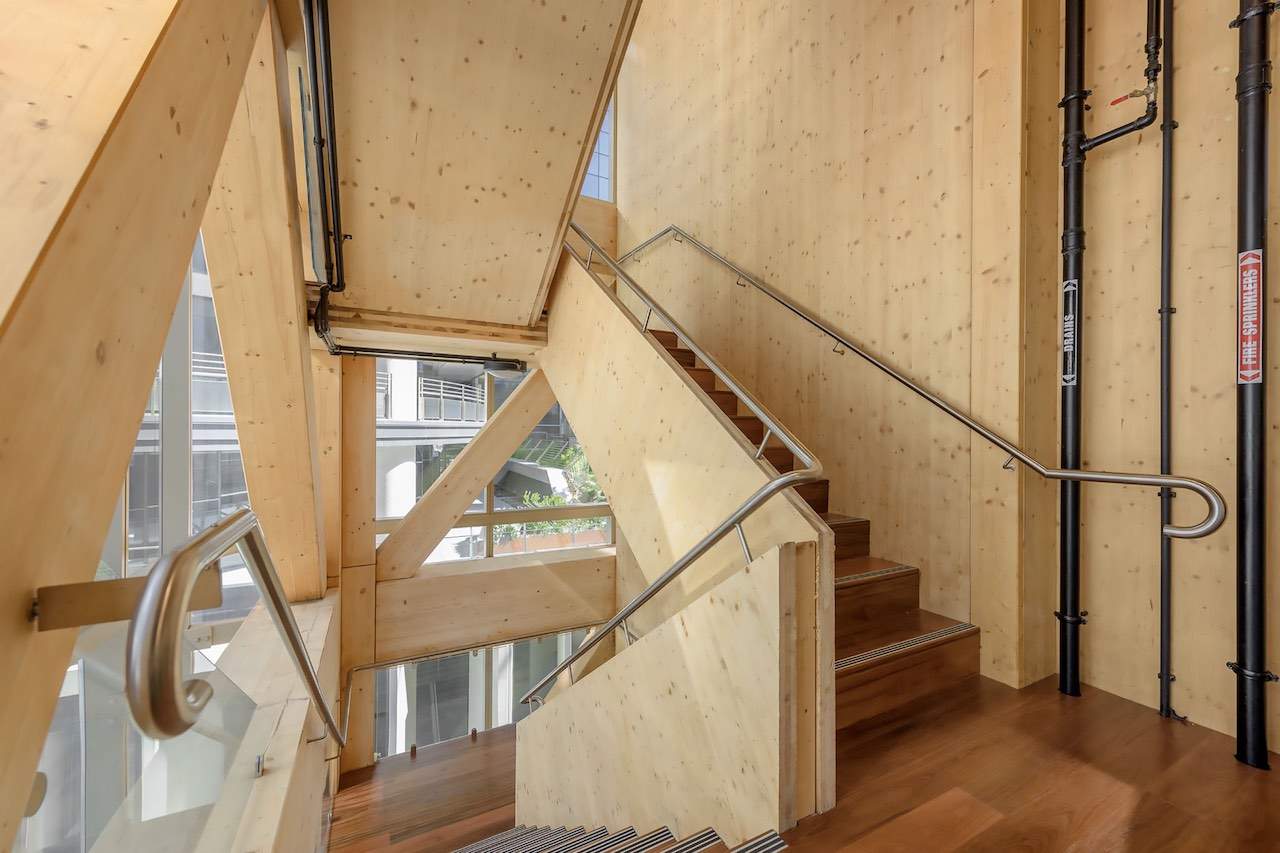The demand for radical change by the United Nations in October this year to limit global warming to a 1.5 degree global temperature increase, requires fundamental change.
A three week visit of five countries which included judging at the 2018 World Architecture Festival in Amsterdam and presentations in Geneva to the PEFC General Assembly, have convinced me that fundamental change is well underway.
The issue now is the speed and uptake of such change. Two key issues stand out from observations and learnings from my recent travels.
The first is that it is no longer palatable or responsible, to use materials that are unlikely to be locally recycled, reused, or that don’t address life cycle issues, resulting in waste in landfill, anywhere in the world.
The second issue is that implemented “design and construction quality” offers fundamental change to our living and working environments. It provides realistic hope for our sustained future on this planet.
It is well documented that the design, development and construction sectors, play a significant role in global greenhouse emissions. Such emissions are now a scientifically proven contributor to changing climatic conditions. Timber, a building material used by humanity throughout our documented history, can play an increased role in the fundamental change necessary for a sustainable future.
Certified timber is now necessary to satisfy the design development and construction sectors, to ensure its sourcing, is not contributing to global temperature increases. The planet has two globally recognised certification systems: FSC (Forestry Stewardship Council) and PEFC (Program for the Endorsement of Forest Certification), known as Responsible Wood in Australia.
Strict adherence to the use of certified timber is the only certain way to ensure timber comes from legal and sustainably managed forests.
We face big issues, timber in particular
Australia has many challenges as an island nation. Our consumption of materials and products that are unable to be economically reused or recycled, has resulted in huge issues for our governing authorities and our community.
Our local timber industry has many challenges, some which include but are not limited to resource security, 80 year harvest cycles, tax rebates provided to other industries, the green movements’ perception of locking up forests, proportionally low timber credits in building rating tools, durability and suitability of common timber finishes, notwithstanding that interior designers often choose timber for colour alone, not for its multiple material advantages.
Engineered timber products such as cross laminated timber (CLT), Glue Laminated timber (GLT) and Laminated Veneer Lumber (LVL) offer great hope for a (needed) transformation within the Australian environment.
The Australian Timber industries are addressing such challenges and providing new solutions for our future. New businesses are emerging to support this predicted timber uptake which will inevitably result in reduced costs and flow on effects in time and quality outcomes. International House at Barangaroo, Sydney by Tzannes Architects provides a great example of how recycled timber and CLT can deliver functional change to our industry.
Winner of the Certified Timber Prize at the 2018 World Architecture Festival, International House was never a certainty to incorporate certified timber and CLT. The architects were required to compare the resultant timber construction with conventional materials and building methods until a clear cost saving solution was documented and proven.
Their ongoing innovation and development of CLT in following projects, has resulted in increased structural spans and continuing efficiencies in adjacent new projects. Clearly design and construction quality has proven itself again.
The World Architecture Festival is a great opportunity to observe and understand “the state of the art” of global architecture. I was honoured and humbled to be the chairing judge for the Best Use of Certified Timber Prize, one of three prestigious prize awards at the 2018 WAF. In addition to judging on one day, I observed two days of other category presentations.
Some notable outputs in presented schemes I witnessed, included:
- The integrated use of technology for visualisation and technical modelling
- Emphasis on design solutions for user experience, not just meeting functional needs
- Community consultation and awareness of social and ecological issues
- Affordable housing solutions, worldwide
- The Heat Island Effect and building insulation being the justification of Green Roofs
- Daylight design to substantially reduce dependence on artificial lighting
- Dense urban solutions balanced by open space and high quality urban design solutions
- Food security, being addressed by local food production
- Marketplaces used as activators of urban space, along with integrated transport solutions
Australian architects were well represented at the World Festival. Conrad Gargett scooped the Culture –Completed Buildings, World Building of the Year prize for The Piano Mill, at Stanthorpe, Queensland and as previously reported.
Tzannes won the Best Use of Certified Timber Prize for International House at Bangaroo, Sydney.
PEFC showcased CLT in their Exhibition stand construction, being one of approximately 50 exhibitors of important global organisations and product suppliers at the 2018 W.A.F.
There are ongoing changes in place around the world which are addressing the big issues facing our planet. The United Nations 17 Sustainable Development Goals are achievable with collective effort and a global response. Arguably for the first time on the planet, technology has enabled us to understand and measure our future challenges.
We have sustainable materials and quality designers able to respond to the radical changes needed for a sustainable planet. Will we struggle to halt global temperature rises unless we activate fundamental change and understand that business as usual will not suffice programs such the World Architecture Festival and timber certification schemes provide us with the drive and the means to deliver the required radical change. The question is “are we changing fast enough and are we responding to the important issues?
Mark Thomson is principal architect of Eco Effective Solutions, independent director Responsible Wood, judge and Queensland representative, Australian Banksia Awards and chair of Judging Panel: World Architectural Festival Best Certified Timber Prize.
Originally published 12 December 2018: https://www.thefifthestate.com.au/innovation/materials/are-we-fast-enough-for-change-a-global-view-of-design-and-timber/


